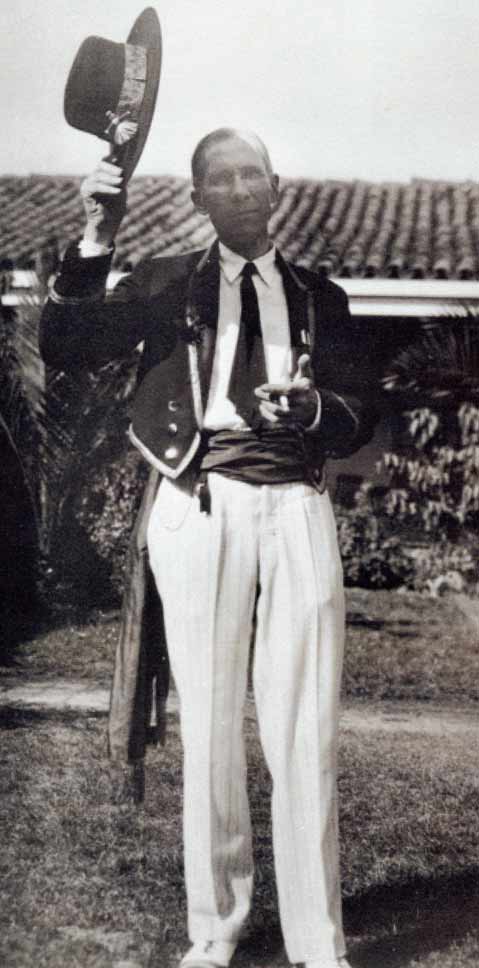Bernhard Hoffmann
The Father of Architectural Planning in Santa Barbara
A strong case may be made that if anyone can be christened the father of architectural planning in Santa Barbara, that man would be Bernhard Hoffmann. Upon his arrival in 1919, Hoffmann embarked upon a decade of civic involvement that would go far in transforming Santa Barbara’s urban landscape.
Born in Stockbridge, Massachusetts, in 1874, Hoffmann graduated from Cornell University in 1895 in electrical engineering. In 1919, his daughter, Margaret, was diagnosed with diabetes, which, in those days, was often fatal. Hoffmann heard of the work of Dr. Nathaniel Bowditch Potter and his clinic in Santa Barbara. Upon their arrival here, the family learned that Potter was dying, but Margaret came under the care of Dr. W. D. Sansum, one of the primary developers of insulin. She responded readily to treatment.

In 1921, De la Guerra family members worked out an arrangement with Hoffmann to restore Casa de la Guerra. He worked closely with architects James Osborne Craig and Craig’s wife, Mary, to develop El Paseo. This complex of retail and office space surrounding the Casa became the centerpiece to give Santa Barbara a unified architectural look — what Hoffmann referred to as the “City in Spain.”
Hoffmann became chair of the Plans and Planting branch of the Community Arts Association, one of the most influential civic agencies of the 1920s. Under his watchful eye, the present city hall was constructed and De la Guerra Plaza made over. During this period Hoffmann commissioned George Washington Smith, and later Carleton Winslow, to design a series of studios around the historic Lugo adobe on East De la Guerra Street, the complex today known as Meridian Studios.
Hoffmann also pushed for systematic planning efforts. The city adopted its first building zone ordinance in the spring of 1924. A year later, again with Hoffmann’s support and cooperation, the city adopted its first building codes. These were passed just one month before the earthquake of June 1925.
Hoffmann then plunged into post-quake restoration and recovery. He was appointed chair of the Architectural Advisory Committee, which raised private funds to hire experts in the building trades and to bring in heavy equipment to expedite the rebuilding of the city. He served as chair of the Architectural Board of Review, an advisory body that passed judgment on the architectural designs of new buildings. This board was the forerunner of the permanent board, founded in 1947. Finally, he served on the Santa Barbara Relief Fund Committee, charged with the raising of monies and their distribution to rebuild and revitalize the city. A major task of the committee was to raise funds to restore the heavily damaged Mission.
In 1927, Hoffmann stepped down as chair of the Plans and Planting Committee, and he and his wife began dividing their time between Santa Barbara and Stockbridge, usually wintering here.
Bernhard Hoffmann died in Stockbridge in July 1949. His civic leadership was vital in the planning process that gave Santa Barbara that “look” with which we are so familiar today.



